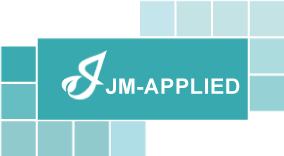Product Certification
產品認證
ISO 14064-1:2018
.jpg)
"Sustainability" has always been one of the most important core values at JM-APPLIED. In order to reduce the impact of greenhouse gases and other factors on the Earth, we have obtained the ISO 14064-1:2018 international certification for greenhouse gas emissions. This certification helps us better understand and manage the carbon emissions generated by our operations in a more systematic way. We hope that through such efforts, we can effectively reduce the environmental burden. For us, this is not only a business achievement but also a commitment to the future environment. We believe that reducing carbon emissions is not just a corporate responsibility but also a way to provide our next generation with a cleaner and healthier living environment.
ISO 45001:2018
.jpg)
JM-APPLIED has officially obtained ISO 45001 certification for our Occupational Health and Safety Management System! This milestone represents our commitment to providing a safer, healthier, and more sustainable working environment, showcasing our responsibility to both employees and customers. Through risk prevention, innovation, and continuous improvement, we believe this certification is not only a significant achievement in our growth journey but also a testament to our dedication to pursuing excellence alongside our partners!
ISO 9001:2015
With a rigorous attitude, striving to "reduce operational risks" and "increase customer satisfaction" has been the core value of JM-APPLIED since its founding. Through the internationally recognized ISO 9001:2015 quality management system standard, we have established a more effective management structure in our operations, enabling us to better meet customer needs, improve efficiency, and reduce the risk of errors. This is our commitment to quality. We believe that stable and high-quality products and services are key to building long-term trust with our customers and continuously creating value.
TS explosion-proof certification

To improve the safety index of high-tech factories, petrochemical plants, and other specialized environments, and to prevent the recurrence of explosive incidents that have shocked both domestic and international communities, the Ministry of Labor recently signed an agreement with key certification bodies from Germany and Japan to mutually recognize test reports. This agreement not only significantly shortens the time required for domestic and international manufacturers to test and certify explosion-proof electrical equipment but also enhances the competitiveness of domestic products in the international market.
The Ministry of Labor stated that most people are aware that electrical equipment generates sparks when powered on and can reach high temperatures during use. It is important to avoid placing flammable materials nearby to prevent accidents. In special spaces with higher safety requirements, such as petrochemical plants, high-tech factories, gas distribution plants, gas stations, and fueling stations, clear regulations and standards are essential for explosion-proof performance of electrical equipment. According to Article 4 of the Safety Information Declaration and Registration Regulations for Mechanical Equipment, explosion-proof lighting, explosion-proof motors, and explosion-proof switch boxes must be tested and approved by an authorized inspection body recognized by the central competent authority.

SEMI Certification

SEMI S2-0712 - Semiconductor Manufacturing Equipment Environmental, Health, and Safety Standards
SEMI S6-0707E - Semiconductor Manufacturing Equipment Ventilation and Exhaust Standards
SEMI S22-0715a - Semiconductor Manufacturing Equipment Electrical Design Safety
With the hard work of all our employees, J-MATERIAL obtained the certification and safety assessment report in March 2016. We passed the basic evaluation procedures including document review, audit, overall functional safety assessment, review of electrical safety-related requirements, final evaluation, onsite testing, report preparation, and technical support. In March 2016, J-MATERIAL's self-manufactured equipment passed the SEMI S2 Equipment Environment Health and Safety Standards Certification, affirming the structural and functional safety of J-MATERIAL's equipment through international certification.
For SEMI S6 Semiconductor Manufacturing Equipment Ventilation and Exhaust, we employ high-efficiency ventilation systems designed to prevent unnecessary harm to personnel, property, and the environment. We care more about your safety than you do.
For SEMI S22 Semiconductor Manufacturing Equipment Electrical Design Safety, during the design process, we eliminate hazards so that even in the event of worker negligence or mechanical component failure, it will not lead to danger or occupational accidents.
To gain more recognition and affirmation and to earn the trust of our clients, all our hard work is truly worthwhile.
Equipment development patent
Selective Catalytic Reduction (AdBlue)
Cooperation plan for AdBlue Plant setting
The exhaust gases emitted by diesel engines (such as those in vehicles, ships, or power plants) contain nitrogen oxides (NOx). Nitrogen oxides not only destroy the ozone layer in the atmosphere, causing air pollution, but are also a major contributor to acid rain. To reduce the content of nitrogen oxides in the exhaust gases, a Selective Catalytic Reduction (SCR) system, also known as AdBlue, is typically installed on these diesel engines. This system uses ammonia (NH₃) contained in urea water to react with nitrogen oxides, converting the harmful nitrogen oxide gases into harmless nitrogen (N₂) and water vapor (H₂O). This process helps stop the rise in global temperatures, improves quality of life, and facilitates the transition to more sustainable energy.

INFORMATION
- No. 1, Ln. 18, Sec. 1, Dakeng Rd., Guishan Dist., Taoyuan City 333, Taiwan (R.O.C.)
- +886-3-3468588
- +886-3-3464588
.jpg)

.jpg)
